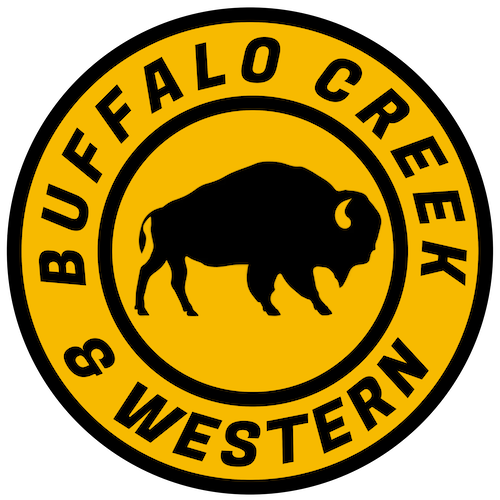Rail-served Industries
Following are the rail-served industries on modeled portion of the Buffalo Creek & Western Railroad HO scale layout

Maple Hollow Farmers Co-op
The Maple Hollow Farmers Co-op was established in the 1940s by local farmers who wanted more control over grain marketing. Their first wooden elevator was built along the Great Northern branch, giving members a reliable shipping point and reducing dependence on private elevators.
During the 1950s and 1960s, the co-op expanded steadily. Annex bins were added to increase storage, and new handling systems improved efficiency at harvest. In the 1970s, a fertilizer facility was built next to the elevator, providing members with access to both dry and liquid products. A small feed mill soon followed, making the co-op a multi-service hub for the surrounding agricultural community.
When Burlington Northern announced plans to abandon the branch in the late 1970s, the co-op played a crucial role in preserving rail service. Its board of directors joined forces with Three Rivers Grain Co., Prairie Valley Grain, and local officials. Together, they helped create the Buffalo Creek & Western Railroad, ensuring that regional farmers maintained their link to national markets.
By 1985, the Maple Hollow Farmers Co-op was the largest customer on the BC&W. Its facilities included the original elevator, annex bins, a grain dryer, fertilizer bins, and a feed mill. Outbound shipments were dominated by wheat and barley in covered hoppers, while inbound traffic consisted of fertilizers, feed ingredients, and occasional boxcar loads of seed or machinery.
Anderson Grain Co.
Founded in 1938 by brothers Carl and Raymond Anderson, Anderson Grain began with a small wooden elevator on the Great Northern branch. The goal was simple: reduce long waits at the co-op and offer faster service. The elevator quickly attracted farmers who valued efficiency and independence.
During the 1960s, the Andersons expanded steadily, adding annex bins and upgrading their grain-handling equipment. These improvements helped them compete with larger operators while also establishing Anderson Grain as a reliable independent shipper. The business gained a reputation for fair practices, encouraging long-term loyalty among local farmers.
By 1985, the Maple Hollow facility still featured the original elevator, one annex bin, and a modest truck-dump setup. Although smaller than the Maple Hollow Farmers Co-op, Anderson Grain remained a steady BC&W customer. In a typical year, the elevator shipped several hundred carloads of wheat and barley, making it an important part of the shortline’s traffic base.
Prairie Valley Grain
Prairie Valley Grain was founded in the mid-1950s by a consortium of local landowners seeking modern, high-capacity grain handling. From the start, the facility featured large steel bins and dual loading tracks, allowing it to move grain quickly and serve regional harvests more efficiently than older wooden elevators.
Through the 1960s and 1970s, Prairie Valley Grain expanded steadily. Additional storage bins and upgraded conveyor systems further increased its capacity. As a result, Prairie Valley grew into one of the largest private elevators in the area. Its size and modern layout gave it a competitive edge over many smaller co-ops.
By 1985, Prairie Valley Grain operated as one of the three major elevators in Maple Hollow, located on a longer spur that accommodated multiple covered hoppers. During harvest, it regularly loaded cuts of grain cars bound for the Burlington Northern interchange. The elevator shipped large volumes of wheat and barley eastward, supporting both domestic and export markets. It also occasionally received inbound seed and fertilizer shipments for local farmers, reinforcing its role as a key agricultural hub.
View the trackplan to see the rail-served industries location on the layout.
